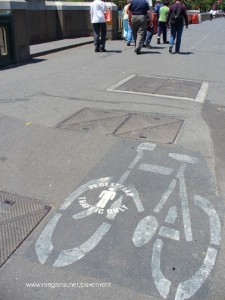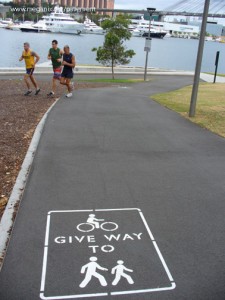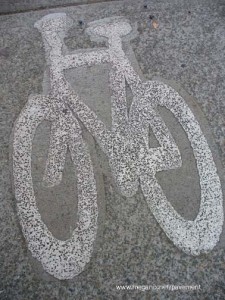 Exhibition Road in London is a mess. In a busy cultural precinct, it runs past the Victoria and Albert Museum, the Natural History Museum, the Science Museum and the Imperial College, and links South Kensington Station with the Royal Albert Hall and Kensington Gardens. But right now, from one end to the other, there are barricades, wire fences, earth moving equipment, temporary traffic lights and improvised pedestrian crossings.
Exhibition Road in London is a mess. In a busy cultural precinct, it runs past the Victoria and Albert Museum, the Natural History Museum, the Science Museum and the Imperial College, and links South Kensington Station with the Royal Albert Hall and Kensington Gardens. But right now, from one end to the other, there are barricades, wire fences, earth moving equipment, temporary traffic lights and improvised pedestrian crossings.
It’s all part of a big experiment, with Exhibition Road planned to become the first shared-space street in London. Apparently the local residents are not happy with the scheme, presumably because they are less interested in accessibility for cultural tourists and more interested in parking spaces and easy access to and from the area for their very flash motor cars.
According to information posters hung from the wire barriers, the street will have “a kerb free single surface†and “visual and tactile lines distinguishing pedestrian areas from those used by vehiclesâ€. Just this week workers have begun to pave some areas of the street with artificial cobblestones, forming geometric patterns in a range of designer greys. Road users will have to learn to read these patterns. When the work is all finished the paving will have become the instructions for its own use.

 There is an ongoing battle between cyclists and just about everyone else – motorists don’t want them on the roads, pedestrians (like me) don’t want them on the footpaths. The issue is a perennial filler for Sydney newspapers and has flared again this week in news stories, opinion pieces and letters to the editor.
There is an ongoing battle between cyclists and just about everyone else – motorists don’t want them on the roads, pedestrians (like me) don’t want them on the footpaths. The issue is a perennial filler for Sydney newspapers and has flared again this week in news stories, opinion pieces and letters to the editor. Almost every sign, symbol, graphic and graffiti marked on the roads and sidewalks is a claim for territory. The two examples photographed for today’s blog record instances where pedestrians have had a victory over cyclists, officially at least, and probably only temporarily. The ineptly obliterated bicycle symbol overpainted with a ‘Pedestrian traffic only’ stencil was on the bridge at the corner of St Kilda Road and Flinders Street in Melbourne in 2005. The ‘Give way’ stencils appeared in parks in the City of Sydney towards the end of 2008 after many complaints from pedestrian park-users.
Almost every sign, symbol, graphic and graffiti marked on the roads and sidewalks is a claim for territory. The two examples photographed for today’s blog record instances where pedestrians have had a victory over cyclists, officially at least, and probably only temporarily. The ineptly obliterated bicycle symbol overpainted with a ‘Pedestrian traffic only’ stencil was on the bridge at the corner of St Kilda Road and Flinders Street in Melbourne in 2005. The ‘Give way’ stencils appeared in parks in the City of Sydney towards the end of 2008 after many complaints from pedestrian park-users. I love the pitted texture of this old bicycle symbol. It’s on a shared footpath (footpath?) near Erskineville Station. In the foreground of the wider shot there is a tag – or maybe it’s just a spill.
I love the pitted texture of this old bicycle symbol. It’s on a shared footpath (footpath?) near Erskineville Station. In the foreground of the wider shot there is a tag – or maybe it’s just a spill.